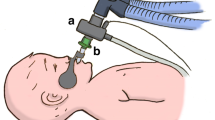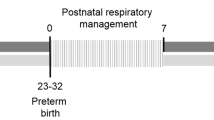Abstract
Extract: Serial studies of arterial and alveolar oxygen, carbon dioxide, and nitrogen tensions, arterial pH, and ratios of dead space: tidal volume were made in 24 nondistressed premature infants. By determining arterial-alveolar gradients, the sequence of development of ventilation/perfusion relations in the non-distressed premature infant can be determined. The presence of an arterial-alveolar carbon dioxide gradient and elevated VD/VT ratio indicate the presence of overventilated/underperfused areas. Alveolar-arterial oxygen gradients may be due to shunting, underventilation (low ventilation/perfusion ratio), or diffusion block. Although underventilation exists, as evidenced by the presence of a urinary-alveolar gradient for N2, it is not a major cause of arterial unsaturation. This evidence suggests that shunting of blood, either through intracardiac shunts or atelectatic lung, is a major cause of arterial unsaturation in the premature infant.
Speculation: Further extension of this work should make possible the construction of VA/Q curves for the individual patient and thus show in even greater detail the maturation of pulmonary ventilation and perfusion.
Similar content being viewed by others
Log in or create a free account to read this content
Gain free access to this article, as well as selected content from this journal and more on nature.com
or
Author information
Authors and Affiliations
Rights and permissions
About this article
Cite this article
Krauss, A., Auld, P. Ventilation-Perfusion Abnormalities in the Premature Infant: Triple Gradient. Pediatr Res 3, 255–264 (1969). https://doi.org/10.1203/00006450-196905000-00010
Issue date:
DOI: https://doi.org/10.1203/00006450-196905000-00010



